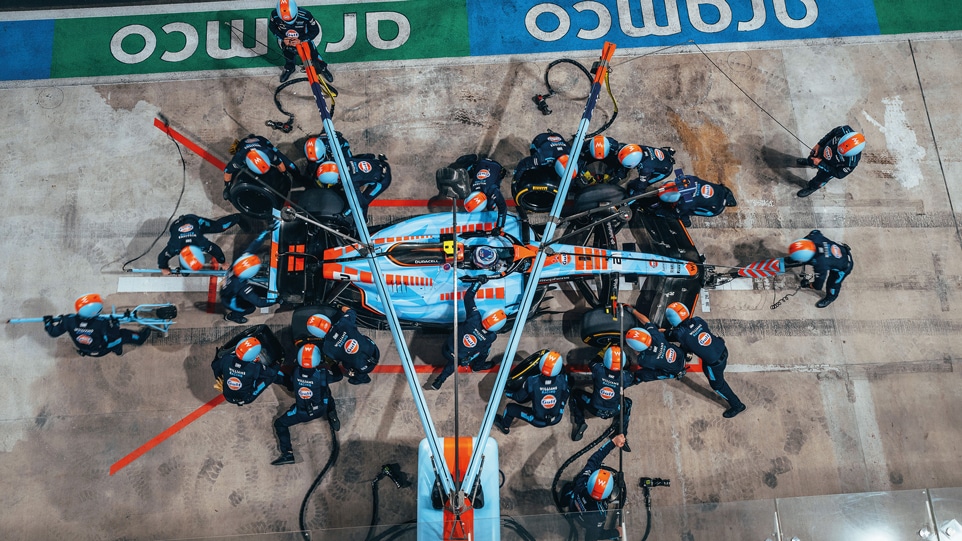Qatar’s tyre-tearing kerbs give F1 a taste of old-fashioned flat-out racing
In Qatar, it was like rolling back the years as tyre strategy was pushed aside for some old-fashioned track racing

Pirelli tyre issues made the Qatar GP into a flat-out fling, with pitting aplenty
Williams Racing
The problem with the tyres at Qatar was announced on Saturday morning by the FIA. It would be more accurate to say it was a problem with the pyramid kerbs used on the exit of the very fast Turns 11/12/13.
“Following the standard analysis of tyres used during Free Practice 1 yesterday,” read the statement, “in which tyres that have been used for approximately 20 laps are examined by Pirelli to check safety parameters, a separation in the sidewall between the topping compound and the carcass cords on many of the tyres that were checked was discovered.
“It is the view of the FIA and Pirelli that a significant number of additional laps on these tyres could result in circumferential damage of the tyres with subsequent air loss, and tyres analysed with lower lap numbers showed a much-reduced extent of the issue.”
Because the subsequent sprint race was interrupted by two safety cars, an insufficient number of racing laps were completed to further assess the problem. As a safety measure for the following day’s grand prix, a maximum life of 18 laps per set of tyres was imposed, including the laps they had already completed in the practice, qualifying and sprint. Over a 57-lap race, this essentially enforced a three-stop strategy but with the timing of the stops determined solely by how many laps any particular tyre set could do. That removed the undercut/overcut competitive dimension. As a side effect it also meant, because the tyres still had plenty of life in them even up to their allocated 18 laps, the quickest way to run the race was to drive flat-out rather than the usual managing of the tyres.
In Austin the drivers were asked – heat exhaustion aside – if they had enjoyed that old-school style of racing. “I like both,” said Lando Norris. “I did enjoy Qatar, just racing. I also enjoy the races where you have to look after the tyres and manage things, which is a more prescribed style. Having both are good. I don’t think you just would want one of them.
“As a driver, naturally you always want to push. It is more enjoyable. But on the other hand, tyre management is another skill that you can make a difference as a driver. So there is satisfaction in that when you can make that difference.”
Carlos Sainz was spared the experience of racing flat-out in the heat by a mechanical failure in his Ferrari which made him a non-starter, but he made a good distinction: “I like how much the drivers had to push, then pitting and coming back. But because you knew on which lap everyone was stopping it wasn’t as good as it might have been. The best races are where the fastest way is very close between tyre managing on a one-stop or pushing hard on a two or three-stop. When it’s in between, that’s when the racing is good”

